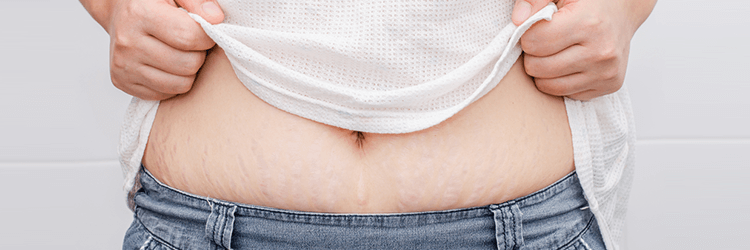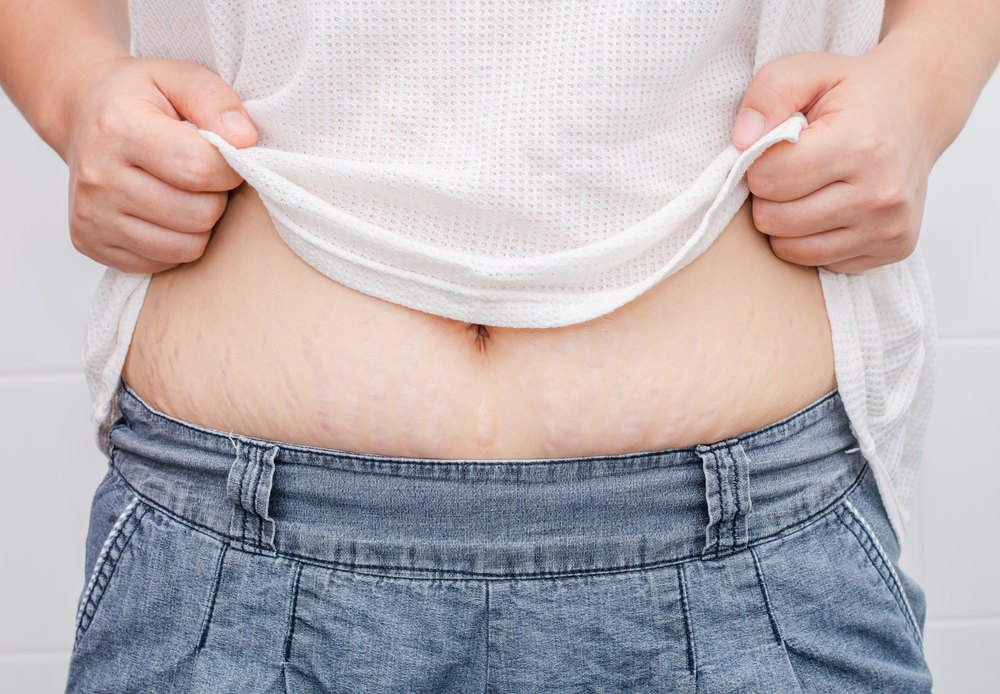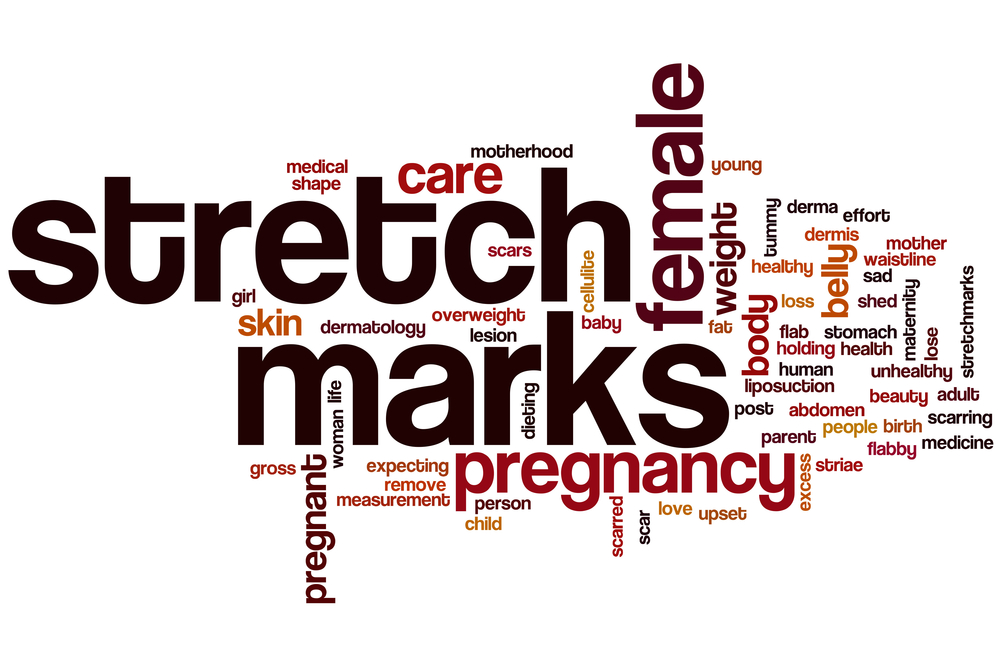Stretch marks or striae typically appear in the later stages of pregnancy or during puberty. They become more pronounced as you grow old. Stretch marks also manifest in people who rapidly build muscle or lose fat.
Stretch marks occur in the elastic middle layer of the skin. These marks allow the skin to retain its shape. However, when constantly stretched, the dermis can break down. That is when the stretch marks appear.
At first, you may feel itching around the area where the skin is being stretched. Soon the stretched areas become reddish or purplish in colour. They then become glossy and turn into signature `zebra crossings’ in silver or white.
It has to be remembered that skin does not bounce back if it has been stretched either due to rapid growth during pregnancy or weight gain. Studies have shown that stretch marks may affect most pregnant women. This is because women gain weight during pregnancy, and as you carry your baby, the tummy has to expand, leaving behind stretch marks. But the good news is that once the delivery is over and the baby is born, the stretch marks should begin to fade away. However, they may not go away completely.
How to deal with stretch marks
Stretch marks may be embarrassing but do not cause any harm. They also do not need medical attention. There are creams and oils that masquerade as stretch mark treatments, but there are no scientific studies to prove it.
Laser: Cosmetic surgeons suggest pulsed dye laser treatment to erase stretch marks. This is a non- invasive procedure and is refined now, thanks to newer and more accurate laser delivery systems. Laser beams are directed at blood vessels beneath the skin till they collapse. This takes away some of the red or purple ‘signatures’ of the stretch marks.
A word of caution! Laser removal of stretch marks cannot completely erase the marks and can be expensive. You will also need several sittings, but no hospitalisation is required.
Tummy tuck: If stretch marks are accompanied with a lot of flaggy or loose skin, doctors may suggest an abdominoplasty procedure. This procedure is also commonly known as tummy tuck. This is a radical treatment option and is an invasive procedure. It mostly works on the marks below your belly button.
The surgery can take about four to five hours or more. The recovering time can stretch to three to six months. Since this surgery is a major one, there are attendant risks too. The cost involved too is significant. Make it a point to discuss all the aspects of surgical removal of stretch marks with your cosmetic surgeon first.
Microdermabrasion: This involves blasting fine crystals at the stretch mark areas to remove a layer of skin resulting in slight reduction in the visibility of lighter stretch marks. This is a time-consuming procedure and can sometimes take about 10 to 12 sessions. Microdermabrasion does not completely get rid of stretch marks, since the tears are actually in the middle layer of skin. However, the procedure refreshes your skin, making it look healthier and fresh. This in turn can make the stretch marks less noticeable .
Besides stretch marks removal, there are some preventive measures to keep in mind, including weight control – avoid sudden weight loss. If you are on a mission to lose weight, do so gradually after consulting a dietician.
It is helpful if you keep your skin moisturized because hydrated skin is less likely to develop stretch marks. Also keep the body hydrated internally by drinking plenty of water. This makes your skin supple and less susceptible to the tears that result in scarring.
















